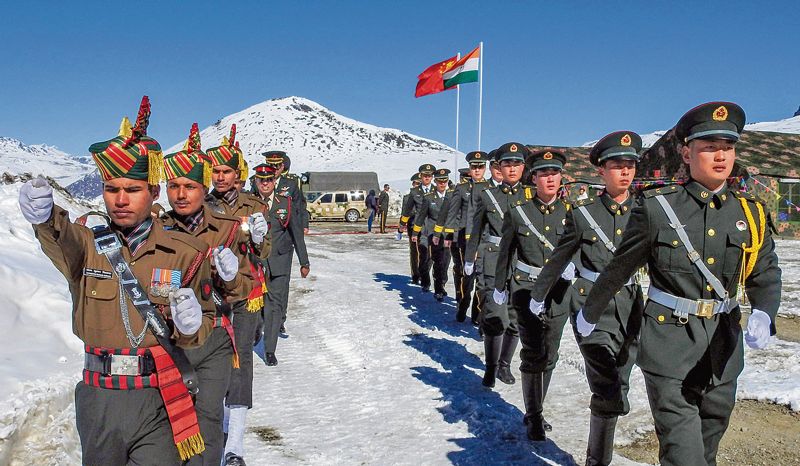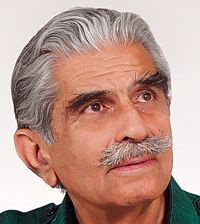For China, the standoff in east Ladakh is over; the border situation is ‘starting to normalise’ and the military strife resulting from the Galwan clash has ended. For India, ‘full normalcy had still not been restored’. That is the new normal which is unlikely to change for the foreseeable future. A demilitarisation zone has been created from Depsang to Pangong Tso and China will not discuss the two remaining friction points: Depsang and Demchok.


THE altered status quo with ‘no LAC’ (replaced by the demilitarisation zone or DMZ) represents the new normal in Ladakh. The Modi government has not come clean on Chinese aggression in Ladakh, reminiscent of how the Nehru government hid from the public the illegal road China had constructed across Aksai Chin in 1956, till its admission in Parliament. The mutual withdrawal from Hot Springs last month marked the end for the PLA of the disengagement process.
India is playing with a weak hand. When asked last year at a press conference why Bangladesh had not voiced support for India in its standoff with China in Ladakh, Foreign Minister AK Abdul Momen said: “it was not sought”, quickly adding “especially after PM Modi’s statement ‘not an inch of territory was lost’.” What Modi actually said was: “China has not intruded into our border, nor has any post been taken over by them”. This one statement with its clarification has caused irreparable harm to India’s repeated urging for the restoration of status quo ante of April 2020. It is Defence Minister Rajnath Singh who has periodically said: “not an inch of territory was lost”. External Affairs Minister S Jaishankar has not contradicted the position taken by Modi. Except for the US initially, no country came out explicitly condemning Chinese aggression.
For China, the standoff in east Ladakh is over; the border situation is ‘starting to normalise’ and the military strife resulting from the Galwan clash has ended. For India, ‘full normalcy had still not been restored’. That is the new normal which is unlikely to change for the foreseeable future. A DMZ has been created from Depsang to Pangong Tso and China will not discuss the two remaining friction points: Depsang and Demchok. Further, it has transformed the border question into one of sovereignty. The Chinese Ambassador in India, Sun Weidong, called the disengagement process having transited to ‘normalised management control’, while India said ‘we have certainly not reached that stage.
For the three Service Chiefs, the benchmark for normalcy is the status quo ante prior to the standoff, reiterated on October 5 by the Chief of the Air Staff, Air Chief Marshal VR Chaudhari. Army Chief Gen Manoj Pande has said that disengagement from two friction points is left. The Chief of the Naval Staff, Adm Hari Kumar, says Beijing is a formidable challenge not just on land but also in the maritime domain. Northern Army Commander Lt Gen Upendra Dwivedi is relying on ‘strategic patience’. In March, Jaishankar dodged the question whether he had raised the issue of restoration of the status quo with his visiting counterpart, Wang Yi.
A piquant situation has been created on the ground. India has retreated to areas on its side of the LAC; the PLA has done the same, mostly on the Indian side of the LAC. The Chinese have applied the Dragon’s Rule: what is mine is mine. What’s yours is also mine. For 40 years, the undelineated LAC was considered a role model for border management between India and China. The adherence to 1993, 1996, 2005 and 2013 border protocols and agreements had ensured peace and tranquility; even in the Galwan clash neither side fired a shot. The modus vivendi of 1988 following the Sumdorong Chu dispute when both countries were militarily and economically on a par. Since then the capability gap has left India limping behind.
According to China’s internal deliberations, withdrawal from friction points Galwan, Hot Springs, Goghra and Pangong Tso (both banks) is a concession to India. Depsang and Demchok are not friction points. Disengagement is to prevent a repeat of the Galwan clash, especially after the turret-to-turret confrontation between rival tanks below the Kailash ridge. Neither side wants vertical escalation. India was keen that Chinese troops remove from the North Bank their flag, a huge map of China and banners with slogans in Mandarin that were embarrassing for India.
Centre for Policy Research’s Sushant Singh, in an essay, has mentioned that the Galwan clash took place at PP14 where Indian soldiers, who had gone to verify whether the Chinese had vacated the spot, walked into an ambush and lost 20 men while four PLA personnel died. In addition, 70 Indian soldiers were wounded and around 100 soldiers, including officers, captured by the PLA. There was no PLA soldier taken captive
Another casualty from the new normal is PLA preventing Ladakhi herders from grazing animals on Indian land. The nambardar of Phobrang village, Konchok Stobgais, said they had lost access up to 40 km of the Kugrang valley. Similarly, Chushul councillor Konchok Stenzin is complaining about loss of traditional grazing ground. They are saying that the Indian leadership is being timid in getting these areas vacated. China, on the other hand, has used graziers escorted by the PLA in civilian clothes, leading to land grab in Bhutan and Arunachal Pradesh. In July 2021, President Xi Jinping visited Tibet’s Nyingtri prefecture opposite Arunachal Pradesh, even as Chinese fishing vessels mark their presence in the maritime domain.
Modi, who has met Xi 17 times and is being lauded for his ‘this is not the era of war’ warning to President Putin at the Samarkand SCO summit, unfortunately missed the opportunity to disarm Xi, who was standing next to him. While the status quo ante of April 2020 is impossible, PM Modi must seek a new modus vivendi that enables India’s equal partnership in an Asian century. Modi and XI are to meet at the G20 summit next month at Bali where he must break the ice and restore summit diplomacy to reach a better deal in Ladakh than what has been arrived at on the ground between military commanders.
